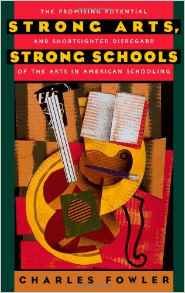Art
“Integrating Art + Design into STEM education promotes critical thinking, a key 21st century skill” (STEAM, 2016).
Today we had the pleasure of having a guest speaker Isobel Laird from the council to give us her insight into integrating art in the classroom. She began by displaying various pieces of artwork from various stages of learning and various materials. I found this interesting as it allowed me to see the endless amounts of ways that art can be incorporated into the curriculum. I also learned that one art project can last for up to 6-8 weeks and does not have to be a single piece of work, it would be fine art, design, photography etc. all merged into the one project.
In the workshop, Isobel guided us through a step-by-step collage that could be completed over a series of a few weeks in a school. Each stage was simple and could be done and adapted with early level all the way up to second level. Firstly, we completed a continuous line drawing of a washing line onto a small piece of paper. All that was needed for this part was a pen and paper. This was both fun and challenging as you were to keep the pen flowing on the paper without lifting it off and creating the washing was enjoyable.

We then, with water colour paint, filled in and designed our washing.

The next part consisted of choosing an A4 piece of paper and designing a wall with the limited poster paints given. This forced us to fix colours and be experimental. We were also provided with some photographs of various styles of wall to gain inspiration from.


After this, we completely covered a larger piece of paper with a wash of colours of our choice. Isobel instructed us to sprinkle salt onto our paintings which, once dried, would give a textured effect.

Once dried, we ripped this painted paper into several strips and created a skyline from it. We then pieced our creation together, tearing and sticking our wall down and cutting and sticking the washing line on top.

This project would enable each child to have a completely different collage by the end of the project which would give them a sense of pride and achievement. This whole idea was taken from a stimulus of a photograph in a book of a washing line, wall and landscape, so it is clear that you can begin a project from any kind of stimulus and end up with something unique.

This project could be developed over a period of 4-6 weeks depending on the age group, but is multimodal, enjoyable and certainly not hugely difficult to teach. I do, however feel that it is vital that teachers allow the children to be as expressive and unique as they feel necessary. Rachel Mason explains that a student quoted the following about art: “I like it better at home and I don’t have to do what I’m told, what and where and how”(Edited, 2004). This backs up the way I feel that our job as the teacher is not to get a child to copy or plagiarise in art, it is to inspire and guide them to be as imaginative and expressive as they like through the use of a stimulus or technique.
Drama
“Though many classroom teachers do not have a drama teacher on staff to collaborate with, drama is a really natural place to begin arts integration, regardless of your experience (or lack thereof) in theatre arts”(Gidcumb, 2014).
In this week’s session we discussed various ways to use drama in the classroom. These are the different styles:

Andrew briefly went through activities that can be used for each one of these teaching methods. The styles that I enjoyed the most were still image and forum theatre. I feel that still image could be used with any age group and with any topic/stimulus. Forum theatre was a new concept to me but I thoroughly enjoyed the interaction between the focal character and the audience. I feel that this can allow children to be pushed and be the main character if they want the chance or if there are pupils that would prefer to be the audience interacting, you as the teacher can ‘be in role’.
I also feel that styles like thought tunnel can be used in a number of ways for different subjects and stimulus’s. “Theatre arts promote creativity in problem solving. Theatre stretches perspective by giving students opportunities to reflect on behaviors, situations, and personalities in the context of a drama. Drama allows students to demonstrate deep understanding of pieces of literature”(Gidcumb, 2014). I believe that for children who maybe struggle to show or convey emotion or that have troubled backgrounds may be able to portray their feelings and stories through some of these styles of drama.
Edited, R.H. (2004) Art Education 11-18: Meaning, purpose and direction. Edited by Richard Hickman. 2nd edn. London: Continuum International Publishing Group.
Gidcumb, B. (2014) Integrating drama in the elementary classroom: Where do I start? Available at: https://educationcloset.com/2014/08/01/integrating-drama-in-the-elementary-classroom-where-do-i-start/ (Accessed: 29 October 2016).
STEAM, S. to (2016) Take action. Available at: http://stemtosteam.org/take-action/ (Accessed: 29 October 2016).



























